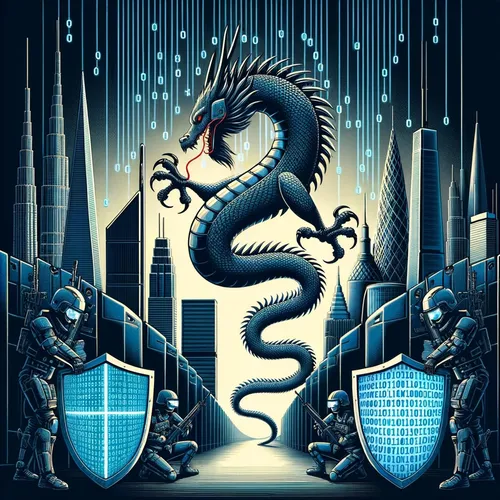Silk Typhoon Strikes DC: MSS Hackers Hijack US Networks in Cyber Siege
- Author
- Quiet. Please
- Published
- Wed 30 Jul 2025
- Episode Link
- https://www.spreaker.com/episode/silk-typhoon-strikes-dc-mss-hackers-hijack-us-networks-in-cyber-siege--67192349
This is your Dragon's Code: America Under Cyber Siege podcast.
Imagine waking up in July 2025 to another sunrise over D.C., your favorite datacenter humming nearby, only to realize the Red Dragon has been at work while you slept. I’m Ting—part cyber sleuth, part humorist. Let’s jump right into the digital trenches and untangle Dragon’s Code: America Under Cyber Siege.
Over the past week, Chinese operations reached new heights. Step one: the attack on U.S. municipal infrastructure using a zero-day exploit in Cityworks—yeah, that’s right, attackers leveraged an unknown vulnerability to leapfrog our defenses and slip into local government systems, triggering service outages and data exfiltration campaigns. These are not kids in hoodies; DOJ indictments named Xu Zewei and Zhang Yu, both tied to China’s Ministry of State Security, as the architects behind Silk Typhoon, aka Hafnium—the hacker group infamous since their 2021 Microsoft Exchange rampage. SentinelLabs and other researchers report these groups now wield intrusive tools, even patented technologies that let them recover encrypted data and hijack Apple endpoints. The gear is sophisticated, often blending commercial software acquisition and custom exploit development, blurring the cyber arms race between states and contractors.
The real kicker isn’t just how deep they got—multiple federal agencies and defense sector networks went dark for hours—but the forensic evidence uncovered. Attributed attack code matched samples from Shanghai Firetech and their Chongqing subsidiary, and the TTPs—tactics, techniques, and procedures—echoed past MSS playbooks. Attribution, though, becomes a cyber game of whack-a-mole: these firms rotate staff and sell off tools, obscuring blame and making prosecution almost a myth.
Defenses this week? Think whiplash. CISA’s incident response teams rushed to deploy emergency network segmentation, while critical endpoints had to be physically isolated. But here’s the practical problem: congressional contract freezes recently left our cyber programs underfunded. Marci McCarthy from CISA says they’re “laser-focused” on essentials, but experts like Michael Daniel of the Cyber Threat Alliance warn, losing seasoned cyber responders right as adversaries escalate is like pulling firefighters in peak wildfire season.
Meanwhile, at the heart of the Pentagon drama, there’s fresh outrage after revelations that Microsoft let China-based engineers touch elements of military software code. Senator Tom Cotton’s already demanding heads roll and safeguards strengthen—think zero trust, tighter vetting, and a shakeup to end dependency on one tech giant.
Experts from the Atlantic Council argue we need to get serious about supply chain integrity. That means kicking risky Chinese equipment out of our systems and enforcing strict security on third-party vendors. Plus, the White House’s new “Winning the Race: America’s AI Action Plan” calls for integrating AI-driven cybersecurity tools and forcing federal agencies to adopt a hard “secure-by-design” approach—no more patchwork, everything monitored, all access tightly logged.
So what’s the lesson, listeners? The U.S. must invest in upskilling cyber pros, incentivize better endpoint defenses, and quit trusting black-box solutions, whether from Silicon Valley or Shenzhen. Because, as President Trump said, “Put America first”—and that includes our code and the skilled hands behind the keyboard.
Thanks for tuning in! Don’t forget to subscribe if you want more from the frontlines of Dragon’s Code. This has been a quiet please production, for more check out quiet please dot ai.
For more http://www.quietplease.ai
Get the best deals https://amzn.to/3ODvOta
